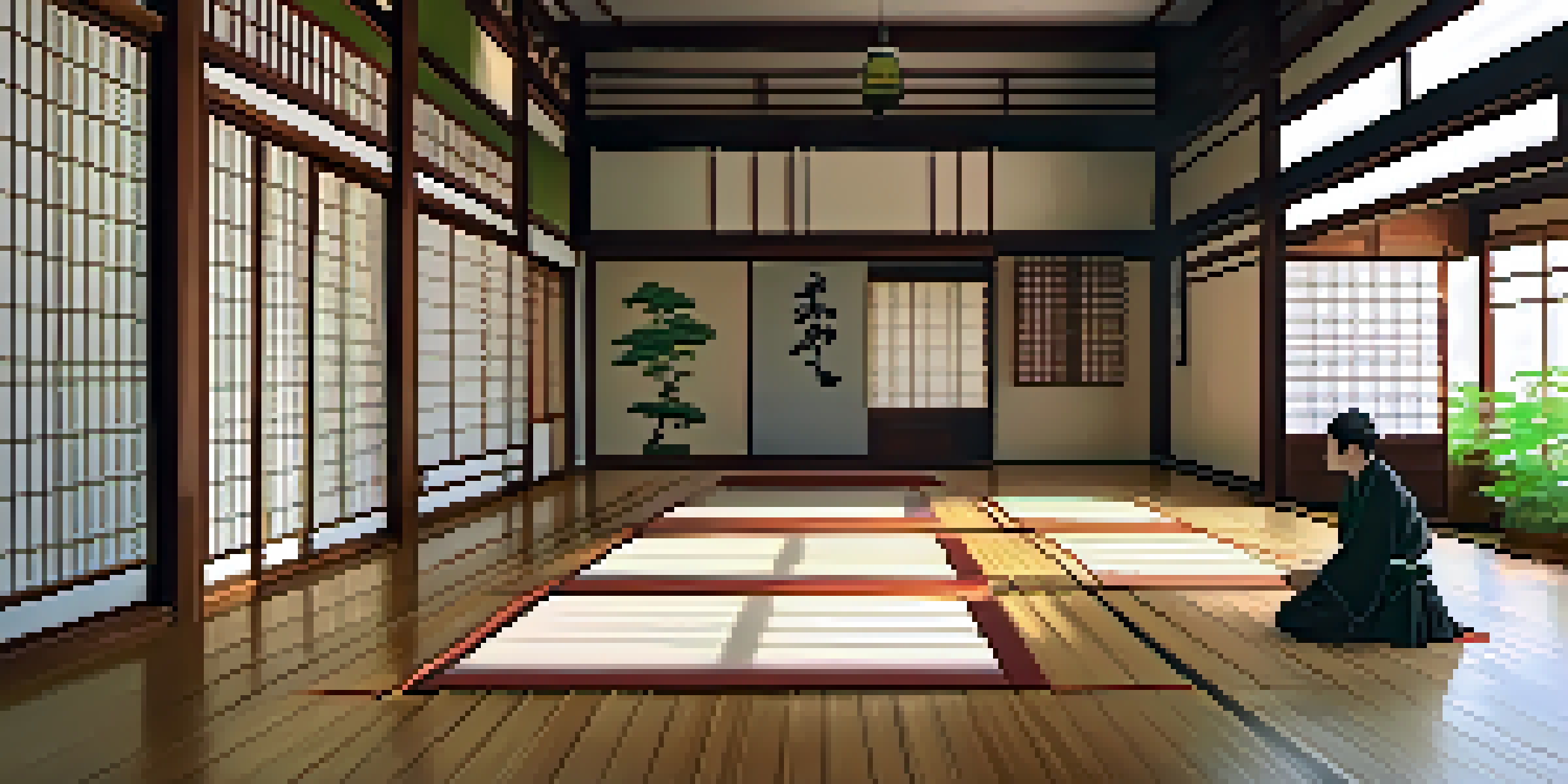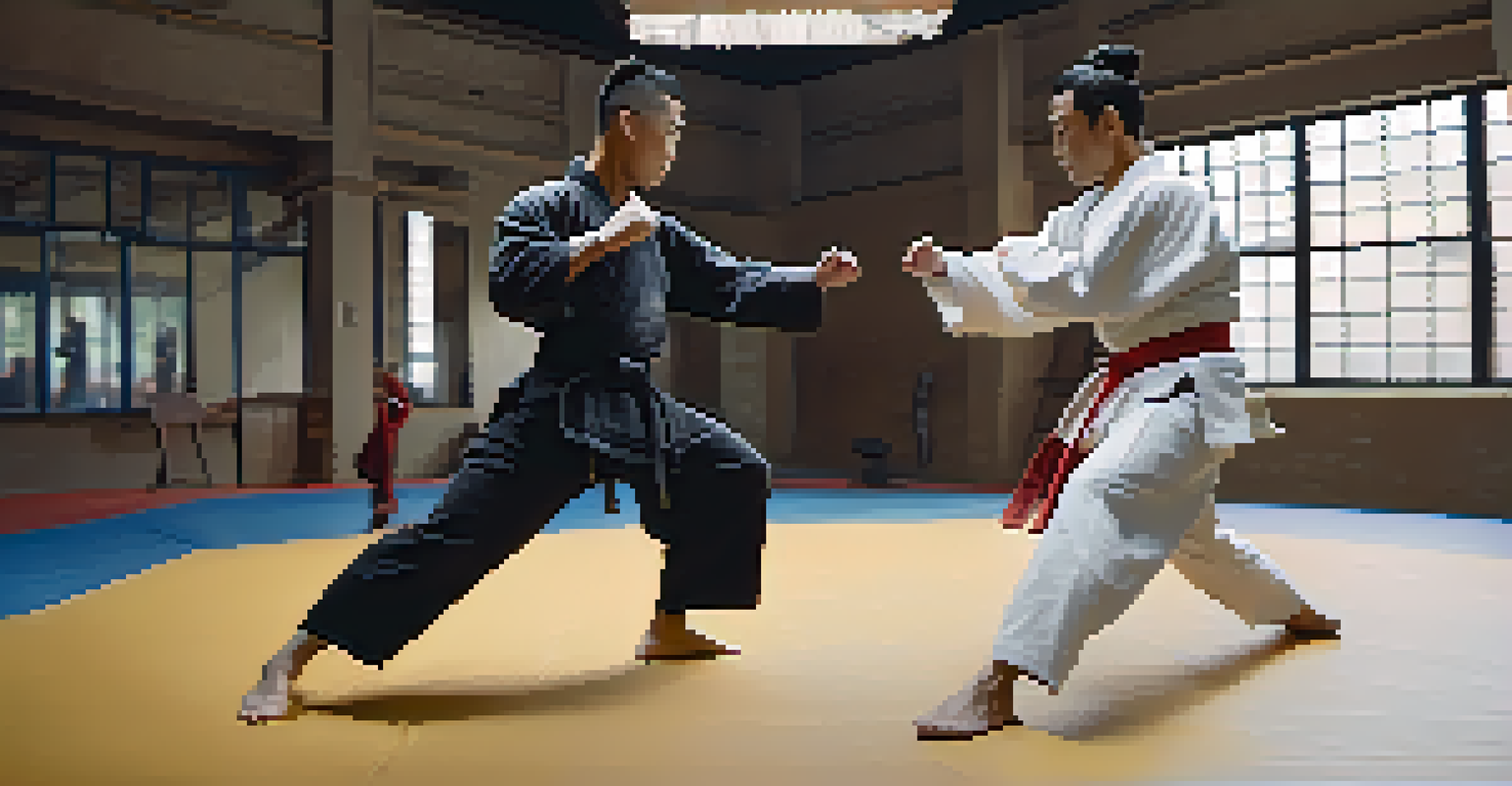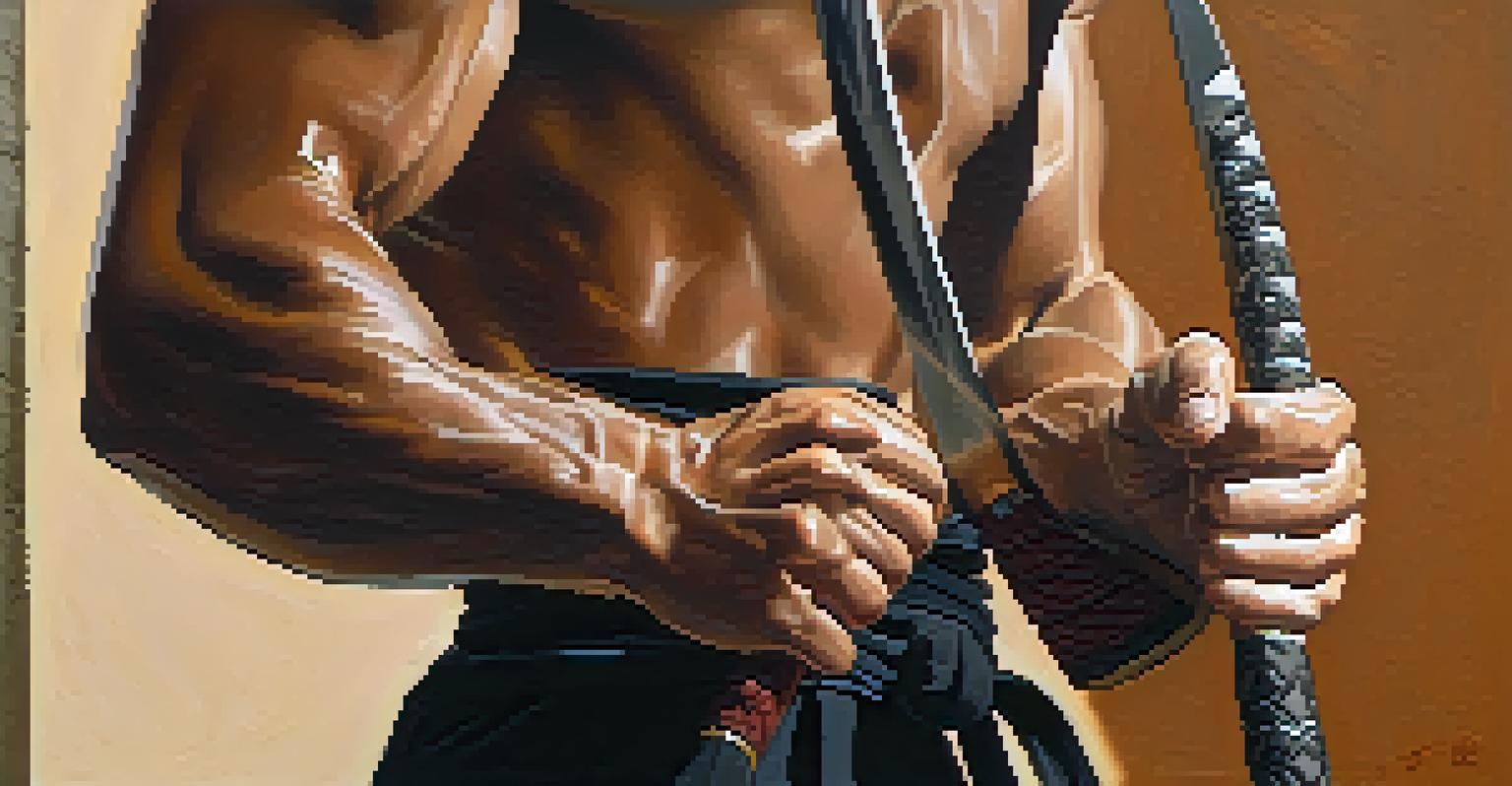Understanding Flow State in Martial Arts Movements

What is Flow State and Why It Matters in Martial Arts?
Flow state, often described as being in the zone, is a mental condition where you are fully immersed in an activity. In martial arts, this means being completely focused on your movements and the task at hand, allowing for seamless execution. This state can enhance your performance, making techniques feel effortless and instinctual.
The best fighter is never angry.
Achieving flow state is not just about physical skill; it also involves mental clarity and emotional stability. When you're in this state, distractions fade away, and your mind is attuned to your body's movements. This heightened awareness can lead to improved reaction times and more effective decision-making during sparring or competitions.
Understanding flow state can help martial artists train more effectively by focusing on activities that promote this condition. Techniques like mindfulness, visualization, and controlled breathing can encourage the flow experience. Ultimately, mastering your flow state can elevate your martial arts practice and overall enjoyment.
The Science Behind Flow State in Sports
Flow state is rooted in psychology and has been extensively studied in sports. Researchers have identified that during flow, the brain releases neurotransmitters such as dopamine, which enhances feelings of pleasure and motivation. This chemical boost can help athletes push through physical limits and achieve peak performance.

When martial artists enter flow state, their body responds with heightened coordination and agility. This is because the brain's processing speed increases, allowing for quicker reflexes and more precise movements. As a result, techniques that may have taken years to master can suddenly feel intuitive and natural.
Flow State Enhances Performance
Achieving flow state allows martial artists to execute techniques effortlessly and instinctively, improving their overall performance.
Understanding this scientific background can help martial artists and trainers develop strategies to trigger flow state more consistently. By creating environments that minimize distractions and promote intrinsic motivation, practitioners can harness the power of flow to enhance their training sessions.
Cultivating Flow State Through Mindfulness Techniques
Mindfulness is a powerful tool for achieving flow state in martial arts. By practicing mindfulness, martial artists can enhance their focus and reduce anxiety, allowing them to fully engage in their movements. Techniques such as meditation, breathing exercises, and body awareness can help create the mental space necessary for flow.
In the midst of movement and chaos, keep stillness inside of you.
Incorporating mindfulness into training routines can be as simple as setting aside a few minutes before practice to center oneself. Focusing on the breath or visualizing successful techniques can help clear the mind of distractions. Over time, these practices can lead to more frequent flow experiences during sparring and competitions.
Additionally, mindfulness can improve emotional regulation, which is crucial during high-pressure situations. When martial artists can maintain their composure and focus, they are more likely to enter a flow state, leading to enhanced performance and overall satisfaction in their practice.
The Role of Challenge and Skill Balance in Flow
One key factor in achieving flow state is finding the right balance between challenge and skill. If a martial artist faces a challenge that is too easy, they may become bored; if it is too difficult, they may feel anxious. The sweet spot is where the level of challenge perfectly matches the athlete's skills, allowing for an immersive experience.
This concept is often depicted as the flow channel, where the ideal balance leads to heightened engagement and enjoyment. Martial artists can seek out partners or drills that push their limits while still being achievable. This balance not only promotes flow but also fosters growth and improvement.
Mindfulness Fosters Flow State
Incorporating mindfulness techniques, such as meditation and breathing exercises, helps martial artists focus and engage fully in their movements.
As martial artists advance in their training, they can continuously adjust the challenges they face. By setting specific goals and progressively increasing difficulty, they can maintain that crucial balance, encouraging flow state during practice and competitions.
How Environment Influences Flow State in Martial Arts
The environment plays a significant role in facilitating flow state in martial arts. Factors such as lighting, noise levels, and even the layout of the training space can impact an athlete's ability to focus. Creating a supportive and distraction-free environment can significantly enhance the chances of achieving flow.
For instance, training in a calm and quiet dojo can help martial artists immerse themselves in their movements without external interruptions. Similarly, the presence of supportive trainers and partners can contribute to a positive atmosphere, encouraging confidence and concentration. This supportive environment can further enhance the flow experience.
Furthermore, understanding personal preferences regarding environment can help martial artists identify what works best for them. Some may thrive in group settings, while others may prefer solo practice. By customizing their training environment to suit their needs, martial artists can increase their chances of entering flow state.
The Importance of Feedback and Flow in Training
Feedback is a crucial element in achieving flow state during martial arts training. Constructive feedback helps practitioners refine their techniques and understand how to improve. This continuous loop of practice and feedback creates a sense of progression, which is essential for maintaining motivation and engagement.
When martial artists receive timely and specific feedback, they can make immediate adjustments, enhancing their focus and involvement in the task. This instant recognition of improvement fosters a sense of accomplishment, which can further promote flow. It builds a positive feedback loop that keeps practitioners eager to learn and grow.
Balance Between Challenge and Skill
Finding the right balance between challenge and skill is essential for entering flow state, as it keeps martial artists engaged and motivated.
Additionally, self-reflection can complement external feedback. By assessing their own performance and recognizing areas for improvement, martial artists can take ownership of their training. This self-awareness can help them set realistic goals and maintain the challenge-skill balance necessary for achieving flow.
Real-Life Examples of Flow State in Martial Arts
Many experienced martial artists can recount moments when they entered flow state, often describing it as a transformative experience. For example, a practitioner may recall a competition where everything seemed to click – their movements were fluid, and their reactions were instinctive. In these moments, they felt invincible, as if time slowed down, and every action was perfectly timed.
Famous martial artists, like Bruce Lee and Jet Li, have spoken about the importance of flow in their performances. They described how being in the zone allowed them to connect with their techniques on a deeper level, making their martial arts practice feel like a dance rather than a struggle. These anecdotes illustrate that flow state can lead to remarkable feats of skill and artistry.

These real-life examples highlight that flow state is not just a theoretical concept; it is a lived experience that can transform training and performance. By learning from these stories and recognizing the conditions that lead to flow, martial artists can aspire to achieve their own moments of peak performance.